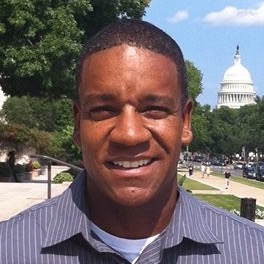- All
- Community Supervision - Probation and Parole
- Correctional Alternatives - Alternatives to incarceration and diversion and deflection etc
- Corrections - Prisons and Jails
- Courts and Case Processing or Dispositions
- Crime Prevention
- Criminal Behavior
- Criminal Justice Reform - Law and Legislation
- Criminal Justice Technology
- Criminological Theory
- Domestic Violence and Intimate Partner Violence
- Gender and Crime and Justice
- Gun Violence
- Health and Mental Health and Substance Use Disorders
- Homeland Security and Terrorism
- International and Comparative
- Policing Policies and Practices
- Race and Ethnicity and Issues of Diversity and Equity and Inclusion
- Reentry and Reintegration
- Restorative and Community Justice
- Victimization
- Violent Crime
- White Collar and Financial Crime
- Youth Justice
Addington, Lynn
• Criminal victimization
• Victimization data
• Violent victimization
• Victim services
Albanese, Jay
• Organized crime
• White-collar crime
• Gambling and crime
• Transnational crime
• Professional ethics
• Human trafficking
Armstrong, Gaylene
• Community corrections
• Institutional corrections
• Program evaluation
• Policy evaluation
• Sex offenders
• Juvenile and female offenders
Ashford, José
• Recidivism prevention
• Treatment of offenders
• Life sentences
• Juvenile justice
• Mental health
• Forensic psychiatry
Baker, Thomas
• Correctional populations
• Perceptions of crime
• Criminal offending
• Incarceration
Barberet, Rosemary
• International criminal justice
• Gender and crime
• Violence against women
• Business and crime
• Youth crime
• Crime indicators
Belenko, Steven
• Substance abuse treatment
• HIV risk behaviors
• Public health and criminal justice
• Implementation science
• Diversion programs
• Drug policy
Bennett, Richard
• Comparative criminology
• Comparative criminal justice
• Police organization
• Procedure
Bohmert, Miriam Northcutt
• Restorative justice
• Social justice
• Gender
• Community supervision
• Prisons
• Sexual assault
Boyd, Lorenzo
• Urban policing
• Criminal justice systems
• Race and crime
Burgess-Proctor, Amanda
• Feminist criminology
• Gender-based violence
• Intimate partner abuse
• Sexual assault
• Crime control policy
• Drug control policy
Carter, David
• Law enforcement intelligence
• Homicide investigations
• Violent crime
• Counterterrorism
Chen, Elsa
• Mandatory minimum sentencing
• Sentencing reform
• Race and ethnicity
• Prisoner reentry
Clear, Todd
• Corrections
• Incarceration policy
• Education in prison
• Community justice
• Correctional classification
• Intermediate sanctions
Cleary, Hayley
• Juvenile justice
• Police interrogation of juveniles
• Juvenile justice policy
• Adolescent development
Cobbina-Dungy, Jennifer
• Corrections
• Prisoner reentry
• Race and justice
• Public response to police violence
Cook, Phillip
• Alcohol and violence
• Economics of crime
• Cost of gun availability
• Consequences of gun availability
Cordner, Gary
• Police administration
• Community policing
• Problem-oriented policing
• Police higher education
• Police planning
• Police research
Decker, Scott
• Gangs
• Criminal justice policy
• Offender’s perspective
• Violence
• Youth crime
• Crime control
Dugan, Laura
• Efficacy of violence
• Terrorism
• Prevention policy
• Intervention practice
• Victimization
• Gender and crime
Dunn, Ronnie
• Racial profiling
• Urban sociology
• Urban studies
• Health disparities
• Biased policing
• Race and crime
• Police accountability and oversight
• DEI
Durfee, Alesha
• Domestic violence
• Intimate partner violence
• Mandatory arrest
• Protection orders
Elam, Paul
• Gun Violence
• Juvenile justice
• Disproportionate minorities
• Racial, ethnic discrimination
• Prisoner reentry
• Dual ward youth
Eren, Colleen
• White-Collar crime
• Crime and media
• Critical criminology
• Qualitative methods
• Social movements
Fontaine, Jocelyn
• Community-based crime reduction
• Prisoner reentry
• Vulnerable populations
• Research methodologies
Fox, Andrew
• Social network analysis
• Crime prevention
• Street gangs
• Communities
Fox, Bryanna
• Forensic psychology
• Violent offenders
• Crime prevention
• Evidence-based policing
Fox, Kate
• Crime victimization
• Missing and Murdered Indigenous Peoples
Gabbidon, Shaun
•. Race and crime
• Ethnicity
• Public opinion
• Diversity issues
• Private security
• Security administration
Gau, Jacinta
• Police Policy
• Police Use of Force
• Race and Policing
• Criminal Justice Policy
Guadalupe-Diaz, Xavier
• Intimate relationships
• Sociological criminology
• Victimology
• Gender and sexuality
• Queer criminology
Haberfeld, Maria
• Law enforcement
• Terrorism
• White-collar crime
• Police integrity
• Police training
• Police ethics
Hairston, Creasie Finney
• Social welfare polices
• Families and the criminal justice system
Henderson, Howard
• Predictive bias and validity
• Prosecutor decision-making
• Justice system disparities
• Criminal justice policy and evaluation
Hipple, Natalie
• Police problem-solving
• Nonfatal shootings
• Police responses to homelessness
Huebner, Beth
• Prisoner reentry
• Gangs
• Monetary sanctions
• Sex offenders
• Incarcerated women
• Jails
• Program evaluation
Fox, James Alan
• Serial and mass murder
• Violent crime
• School and campus violence
• Capital punishment
• Juvenile justice
• Gun violence
James, Lois
• Impact of fatigue
• Sleep and circadian rhythms
• Implicit bias
• Simulation research
Jenness, Valerie
• Prostitution
• Hate crime
• Prisons
• Prison violence
• Transgender prisoners
• Corrections
Jones-Brown, Delores
• Police-community relations
• Stop and frisk
• Race and justice
• Prosecution
• Policing alternatives
• Race and police use of force
• Law and adolescent males
Kennedy, David
• Criminology
• Gang violence
• Focused deterrence
• Problem-oriented policing
• Community policing
• Drug markets
• Domestic violence
Kerrison, Erin
• Black Feminist Praxis
• Data science for social good
• Carceral abolition and safety for all
• Legal epidemiology
• Health and healthcare inequity
• U.S. criminal legal system
• Violence intervention
Kim, Bitna
• Asian criminal justice
• International crime
• Partnerships in criminal justice
• Domestic homicide
• Meta-analysis
Kleck, Gary
• Effects of punishment
• Deterrence
• Gun control
• Victim resistance to crime
• Crime prevention
Klinger, David
• Modern police
• Arrest practices
• Deadly force
• Terrorism
• Community policing
Kochel, Tammy Rinehart
• Procedural justice
• Community policing
• Policing strategies
• Police legitimacy
• Race and policing
Kubrin, Charis
• Crime trends
• Immigration and crime
• Media, culture and crime
• Criminal justice reform
Kupchik, Aaron
• School safety and policing
• School punishment
• Correctional facilities
• Juvenile delinquency
• Sociology of childhood
Kurlychek, Megan
• Sentencing
• Juvenile justice
• Offender rehabilitation
• Collateral consequences of crime
La Vigne, Nancy
• Criminal justice evaluation
• Prisoner reentry
• Crime prevention
• Crime and criminal behavior
LaFree, Gary
• Causes of terrorism
• Consequences of terrorism
• Predictors of violence
• Official statistics
Lageson, Sarah Esther
• Criminal records
• Background checks
• Ban the Box
• Revenge pornography
• Internet privacy and transparency
Lane, Jodi
• Fear of crime
• Perceived risk
• Crime policy
• Corrections
• Juvenile justice
• Drug Courts
Levin, Brian
• Hate crime
• Criminal law
• National security
• Terrorism
• Extremism
• Constitutional law
Lovell, Rachel
• Gender-based violence
• Sexual assault
• Sexual assault kits
• Sex trafficking
• Intimate partner violence
Lum, Cynthia
• Policing
• Security
• Criminal justice evaluation
• Criminology
• Criminal justice reform
• Terrorism
Lynch, Shannon
• Incarcerated women
• Mental health
• Treatment evaluation
• Violence against women
• Survivors’ trauma recovery
• Prisoner reentry
Herold, Tamara
• Crowd dynamics
• Crowd management
• Place management
• Crime prevention
Maguire, Edward
• Police organizations
• Violent crime
• Organization theory
• International violence
• Prevention and deterrence of crime
• Community policing
• Social science research methods
Maimon, David
• Cyber crimes
• Malware and ransomware
• Online fraud and theft
• Cyber espionage
• Cyber terrorism
• Child pornography
• Online guardians
Marganski, Alison
• Gender and violence
• Intimate partner violence
• Cyber-stalking
• Victimization
• Online harassment
• Victim support services
Mears, Daniel
• Juvenile policy
• Supermax prisons
• Mental health
• Religion
• Inmate visitation
• Mass shooting tragedies
Mellow, Jeff
• Jails
• Program evaluation
• Incarceration
• Prisoner reentry
Merlo, Alida
• Juvenile justice policy
• Criminal justice policy
• Corrections
• Women and the law
Messinger, Adam
• LGBTQ intimate partner violence
• Violence against women
• Youth bullying
• Child abuse
Messner, Steven
• Social institutions and crime
• Patterns of crime
• Crime in China
• Homicide
Mitchell, Ojmarrah
• Race and crime
• Racial profiling
• Sentencing and corrections
• Drugs and crime
• Drug control policy
• Criminal justice reform
Myers, David
• Juvenile justice
• Delinquency
• Criminal justice policy
• Planning and evaluation
Nellis, Ashley
• Life and long term imprisonment
• Parole
• Second look sentencing
• Criminal legal reform
• Racial and ethnic disparities
• Youth justice
Nix, Justin
• Police legitimacy
• Procedural justice
• Police use of force
Oleson, James
• Psychological criminology
• Crime and pop culture
• Criminogenic risk
• Criminal justice reform
Paoline, Eugene
• Police culture
• Police socialization
• Police use of force
• Police education
Peck, Jennifer
• Racial and ethnic disparities
• Juvenile justice system
• Juvenile justice courts
• Juvenile justice reform
• Disproportionate minority contact
• Vulnerable populations
Piquero, Alex
• Criminal behavior
• Crime policy
• Criminal careers
• Criminological theory
• Crime trends
Piza, Eric
• Spatial analysis
• Crime control technology
• Evidence-based policing
• Program evaluation
Pizarro, Jesenia
• Firearm related harms
• Violence prevention
• Homicide
• Violent crime
• Corrections policy
Potter, Hillary
• Violence against girls and women
• Race, gender and class
Powers, Ráchael
•Violent victimization
•Gender-based violence
•Hate crime
•Bystander behavior
Rabe-Hemp, Cara
• Diversity in policing
• Women in policing
• Police misconduct
• Perceptions of police
Roman, John
• Cost-benefit analysis
• Death penalty
• Economics of crime
• Crime control policies
Rudes, Danielle
• Community corrections
• Probation and parole
• Prisons
• Prisoner reentry
• Problem-solving courts
• Street-level workers
Rydberg, Jason
• Sex offender policy
• Research design
• Methodological issues
• Prisoner reentry
• Program evaluation
• Community supervision
Salisbury, Emily J.
• Women offenders
• Gender-responsive policy
• Evidence-based corrections
• Offender risk assessment
• Correctional rehabilitation
• Sex trafficking
Schafer, Joseph
• Police organizations
• Future of policing
• Citizen perceptions of police
• Police leadership
Sharp, Susan
• Women and incarceration
• Death penalty
• Penal policies
• Gender and crime
• Failure to protect laws
Slate, Risdon
• Stress on justice practitioners
• Mental health
• Criminal justice system
Smith, Michael
• Crime, law and public policy
• Law enforcement agencies
• Racial profiling
• Traffic stops
Socia, Kelly
• Public perceptions of crime
• Criminal justice policies
• Criminal behavior
• Sex offenders
Spohn, Cassia
• Prosecution
• Race, ethnicity and gender
• Sexual assault
• Drug offenders
• Criminal records
Stafford, Mark
• Criminological theory
• Juvenile delinquency
• Sex offending
• Juvenile justice
Sundt, Jody
• Criminal Justice Policy
• Corrections
• Prisons and Jails
• Sentencing Reform
• Criminal Justice Education
Tamborra, Tracy
• Domestic violence
• Sexual assault
• Race, class and gender
• Criminal justice system
Tartaro, Christine
• Suicide in correctional facilities
• Jail design
• Reentry
• Correctional treatment
• Mental illness
• Criminal justice education
Taxman, Faye
• Health services
• Correctional programs
• Probation and parole supervision
Terrill, William
• Policing
• Police Use of Force
• Police Culture
Travis, Jeremy
• Prisoner education
• Correctional health
• Community policing
• Criminal justice reform
• Impact of incarceration on families
Visher, Christy
• Communities and crime
• Prisoner reentry
• Crime prevention strategies
• Incapacitation
• Drug testing
• Substance abuse
Wakefield, Sara
• Mass imprisonment
• Racial inequality
• Conditions of confinement
• Prisoner reentry
• Criminal justice system
• Child well-being
• Child protective services
Webster, Daniel
• State firearm and alcohol policies
• Policing strategies
• Street outreach
• Youth gun acquisition
• Gun violence
• Intimate partner violence
Weisburd, David
• Crime Concentrations
• Police innovation
• Hot spots Policing
• Experimental criminology
• Research Design
Welch, Kelly
• Racial stereotypes
• Ethnic stereotypes
• Criminal profiling
• School punishment
• School-to-prison pipeline
• Public punitiveness
Wildeman, Christopher
• Mass imprisonment for inequality
• Impact of imprisonment on families
• Child welfare
• Child maltreatment
• Foster care system
Wilson, Frank T.
• Media depictions of crime
• Mass incarceration
• Prison history
• Public perceptions
• Death penalty
• Criminal justice policies
Wood, Peter
• Correctional policy and practice
• Offender decision-making
• Habitual offending
• Race and ethnicity
• Urban and community sociology
• Mental health
Worrall, John L.
• Policing and courts
• Legal issues
• Crime control policy
• Prosecution
• Courts
• Panel data modeling
Young, Katheryne
• Criminal procedure
• Jury selection
• Trial evidence
• Race, gender and class
• Police-citizen interactions
Zalman, Marvin
• Wrongful conviction
• Constitutional criminal procedure
• Law
• Courts
Zeoli, April M.
• Intimate partner violence
• Homicide
• State firearm policies
• Policy analysis
• Extreme risk protection orders











































































































